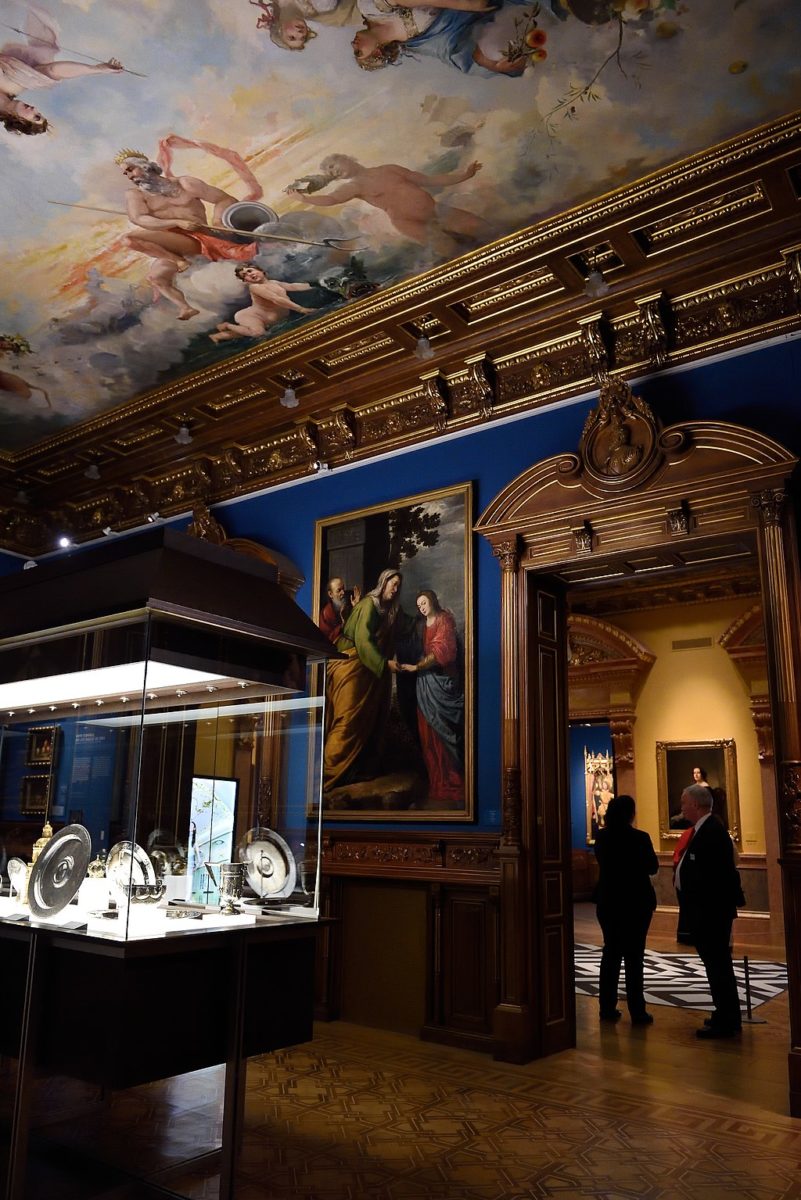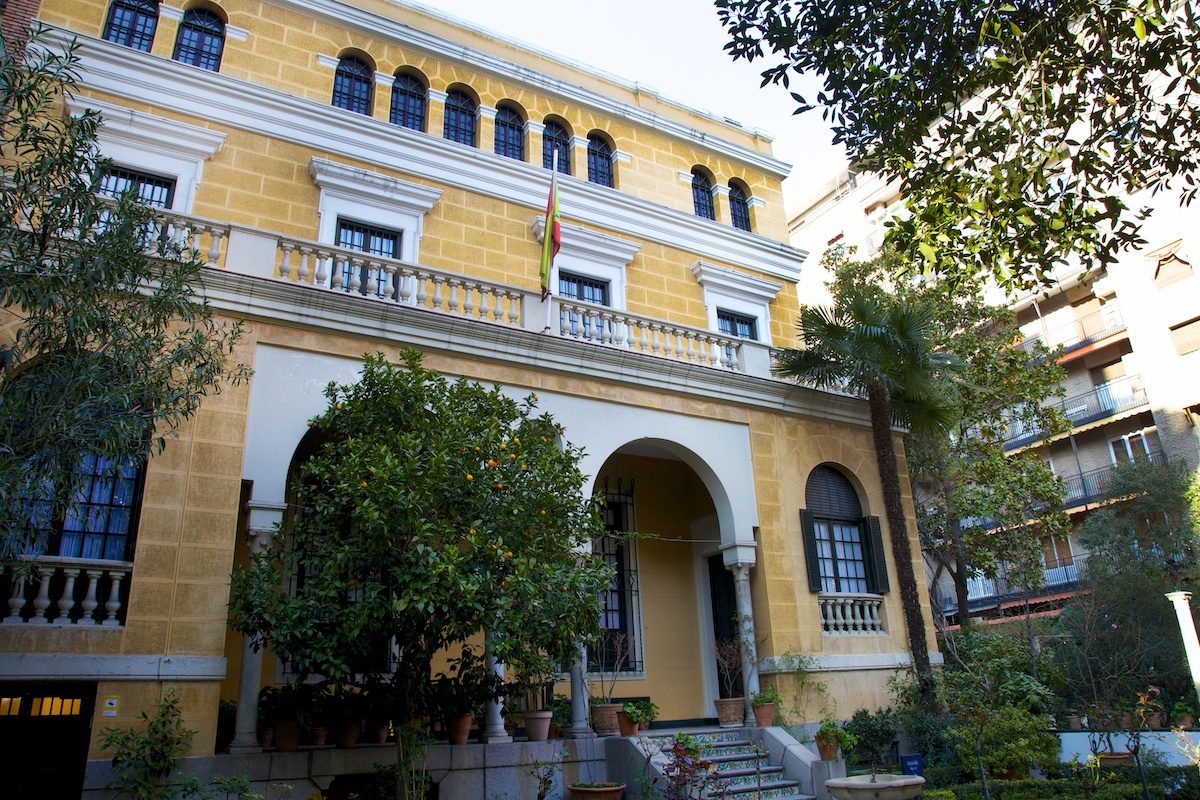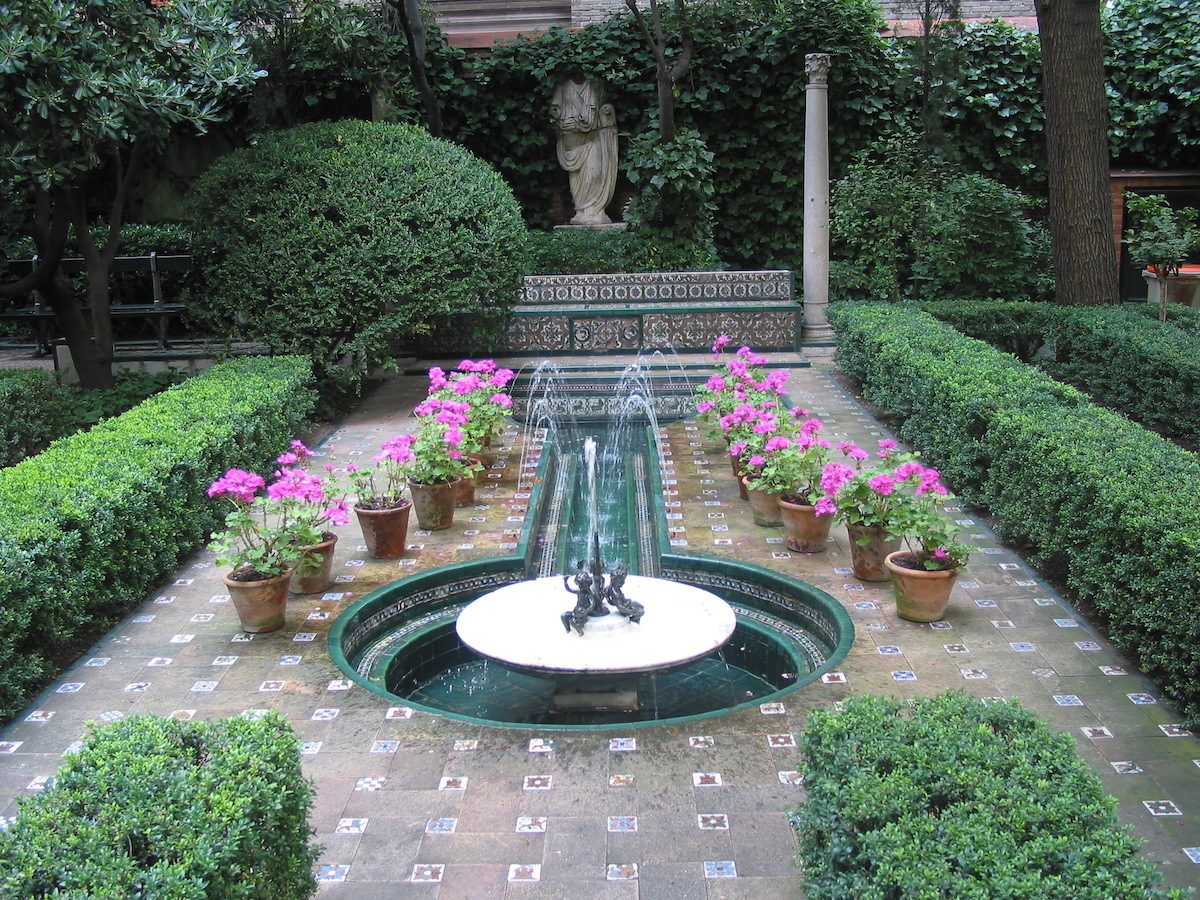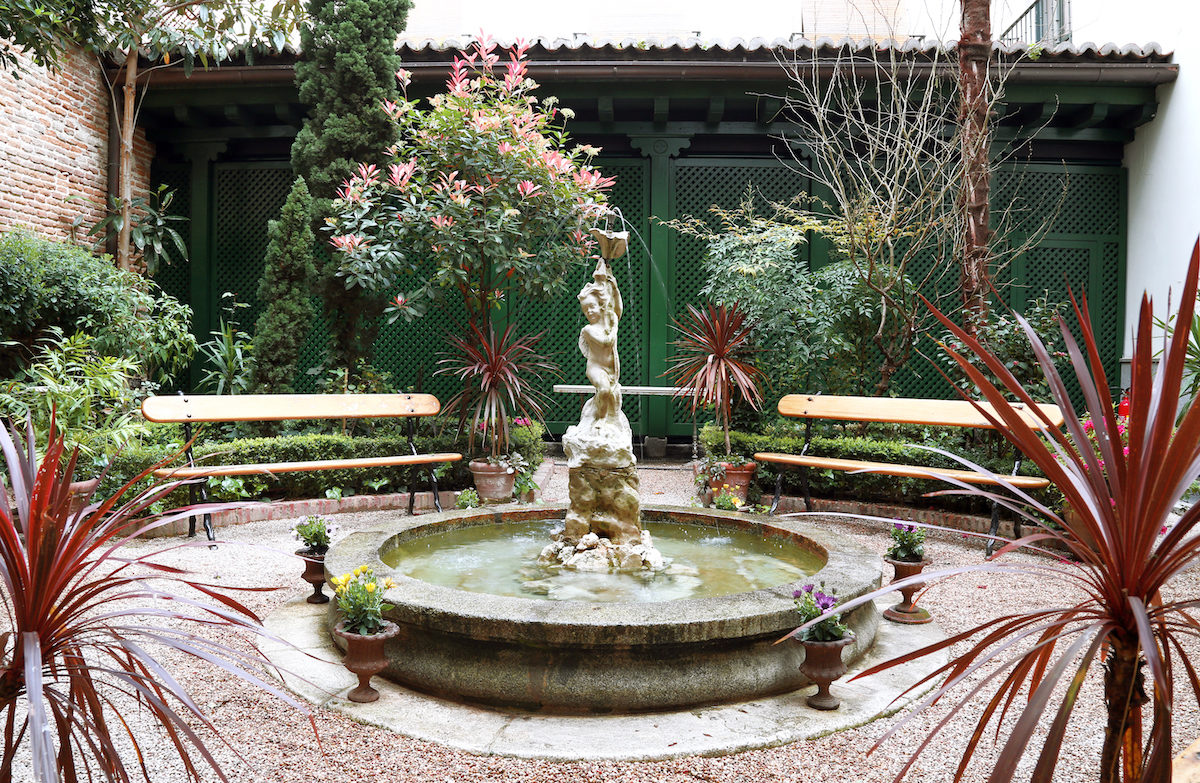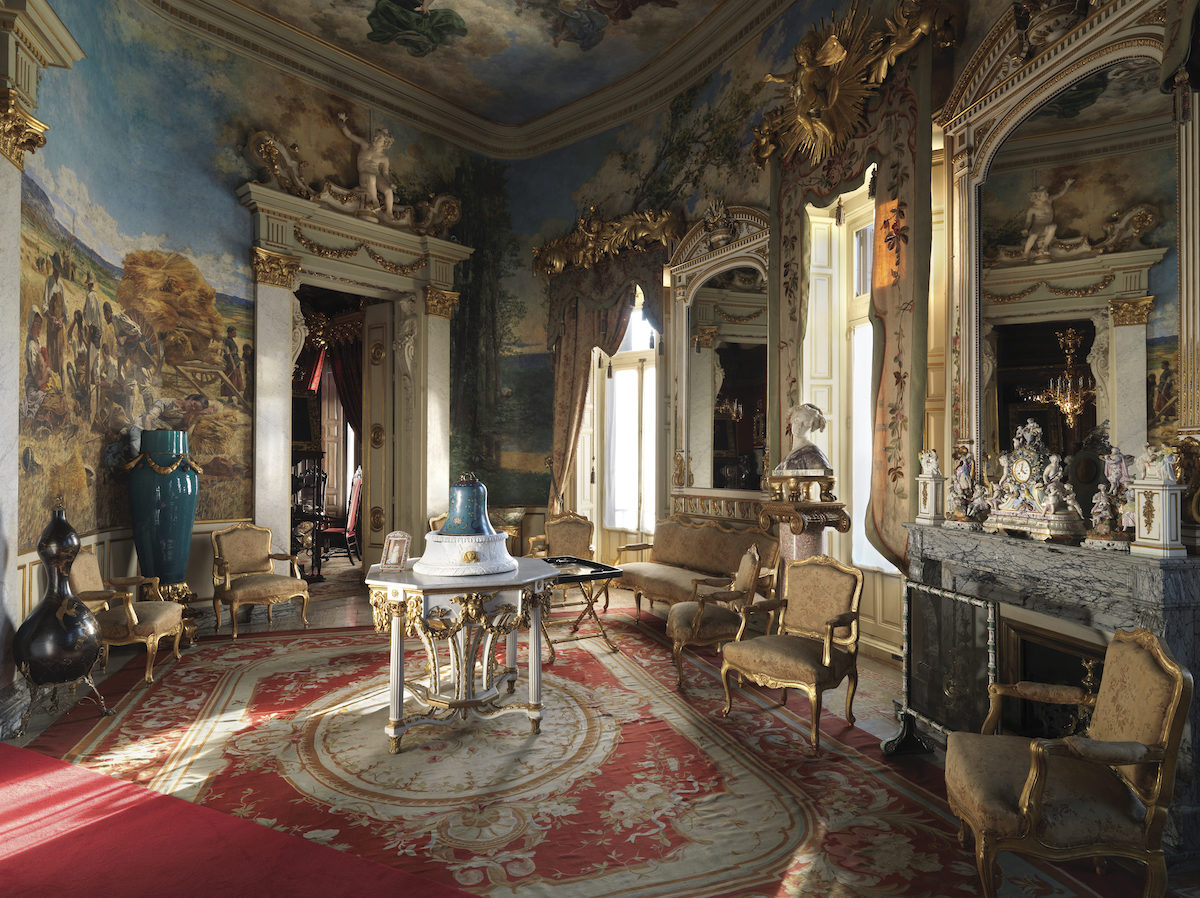Madrid’s “mansion museums” offer intimate looks at Spanish history, culture, and art in delightfully unique, doable-in-an-hour settings—most of which are conveniently within walking distance from each other.
I fell for Madrid in 2017 at the Museo del Romanticismo, on a 24-hour stopover en route to Seville. Then, I learned two things. First, that I was born in the wrong century. Second, that art-filled mansion-museums are a Madrid specialty that far outshine standing in line and fighting crowds at the city’s major museums.
On a recent trip, I lingered in the Spanish capital, obsessing over museum-quality paintings and tchotchkes in the dining rooms, boudoirs, ballrooms, and gardens of four dreamy Madrilenian mansions—and one spectacular palace.
In these opulent spaces, you can get up-close-and-personal with El Grecos, Goyas, Titians, Rubens, and more. Through the Prado-quality art and decorative objects—mostly hung and displayed as the owners would have enjoyed them in the day—you can immerse yourself in Spanish life and art through the centuries (without the presence of selfie-taking Instagrammers).
Unspooling like a Spanish Downton Abbey film reel, these places, perfectly frozen in time, reflect the unique personalities of their fabulously wealthy founders—from the Spanish Duke of Albas to Impressionist painter Joaquin Sorolla y Bastida. Each museum is do-able in an hour or two, depending on your pace.
In an added plus, Madrid is a walking city, and the museums are not far from each other. Pause for lunch, coffee, or el aperitivo as you stroll from one eye-popping residence to another, along the grand boulevards and through the narrow lanes and sheltered squares that stitch together the city’s Belle Époque urban fabric—it’s a relaxing way to wallow in Spanish history. And, at 12 Euros for a pass that admits you to most of the museums over 10 days, it’s the best deal in town.
Below, the best mansion-museums Madrid has to offer.
Museo Lázaro Galdiano
Luckily for art history lovers, José Lázaro Galdiano married up in 1903—the deep pockets of his Argentinian wife, Paula Florido, allowed this renaissance man and banker to increase his fortune through deals and investments until, some said, he had more pesos than the Spanish government. Business, though, was just an excuse to finance his lifelong passion for art, literature, and publishing.
A patron of painter Francisco de Goya and other luminaries in the arts, sciences, politics and literature, Lázaro Galdiano used his collecting and publishing as vehicles to re-invigorate national pride in his country that at the time had just lost Cuba—the last colony of its once vast Empire—while promoting the humanist ideals he felt were vital to modernizing Spain’s fossilized society at the dawn of the 20th century.
Take a moment to explore the charming English-style gardens that surround the pink three-story mansion, where you can lounge on one of the green wooden benches in the shade of a palm tree, alongside neighborhood elders who know a good spot when they see one.
Museo Sorolla
Museo Sorolla was built by Spain’s beloved Impressionist painter Joaquin Sorolla y Bastida, a successful artist and self-made man whose home and studio is a graceful ode to the arches, slender pillars, and ceramic tiles of Southern Spain’s sunny Andalusia region.
Sorolla’s adoring patrons, mostly members of the rising Spanish bourgeoisie, snatched up his paintings as quickly as he could produce them. And produce he did—over 2,000 paintings in his lifetime, most of them between 1905 and 1911, when he was involved in several international expositions.
Eclectic, personal, and charming, the Museo Sorolla reflects the painter’s devotion to his family, which he painted frequently as he experimented with different techniques. But he also had a discerning eye for his country’s crafts and artisanal traditions—as seen in the hundreds of colorful regional ceramics displayed throughout the house.
Museo del Romanticismo
The most intimate—and also the oldest—of all the museum-homes, the comfortable mansion, on a small street in the happening Malsana neighborhood, was built from 1776-78. The museum was launched in 1924 when Spain’s first tourism minister, the visionary Marquis Benigno de la Vega-Inclán (who, fun fact, also created Spain’s unique Parador network, which saved scores of Spanish castles, convents, and the like from ruin by converting them into luxury hotels) donated his personal collection of art and furniture to the state with the express purpose of furnishing this jewel-box of a home and creating a place that would highlight the historical period when Spain’s burgeoning middle class was seeking a more liberal way of life.
Very few things are behind ropes here, so you really feel like a part of the family. The Romanticism Museum is also the most high-tech of Madrid’s mansion-museums, with interactive panels and touch-screen stands that painlessly interpret the daily life of a small but fortunate segment of the Spanish population at the turn of the 20th century. That makes for an experience that is focused more on wandering through the mansion’s rooms—where period furniture is set up as though the occupants were just out for the day—than on ogling a trove of famous paintings.
Museo Cerralbo
Wealthy Victorian-era collectors were not minimalists, but for the uber-aristocratic Cerralbo family, more was most definitely more. This Italianate mansion, built in 1893, served the seventeenth Marquis of Cerralbo and his socialite wife as a home, but also as a private museum. Because the Marquis, who may have been a bit of a shopaholic, amassed a collection of over 50,000 spectacular paintings and objets d’art in his travels. France, for example, was catnip for wealthy collectors at the time, as much of the French aristocracy had been impoverished (or, worse, beheaded) during the country’s democratic revolutions.
You get a sense of the family’s gravitas right away, upon entering the mansion’s public areas through a room crammed with coats of armor, mail-and-chains, swords, and even the very helmet that an ancestor used while crusading in the middle ages. There’s an Oriental room, complete with opium pipes. The ballroom, a mini-Versailles, sparkles with Venetian mirrors, gilded furniture and chandeliers dripping with crystal. Another room is dedicated to a collection of archeological treasures amassed on a central table, where dozens of antique figurines from Egyptians, Romans, Greeks, and other ancients are mounted on small columns. Dozens of intricate clocks chime on the hour.
Liria Palace
Get an immersive look at the extensive and world-renowned collection of art and documents collected by the House of Alba over the past five centuries, along with tabletops featuring 20th century photos of the Dukes and Duchesses and their family, friends, and dogs. Through music and narration, Spain’s past comes alive during the 65-minute guided tour.
The creamy yellow palace, which beckons beyond the emerald green lawn, is beautiful in its restrained classicism. Join one of the groups of headset-wearing cultural explorers that departs the modern visitor’s center like clockwork every 20 minutes.
As well as being well paced and curated, the tour is entertaining. The narrators change depending on each room’s theme and era. The tour’s musical tract features period music by composers who had personal ties with the House of Alba, including Tchaikovsky and Strauss. In fact, you can see the original partitions in the library. There, you’ll also find signed letters from Christopher Columbus, early maps from the Age of Discovery, and the first edition of Don Quixote, dated 1605.



